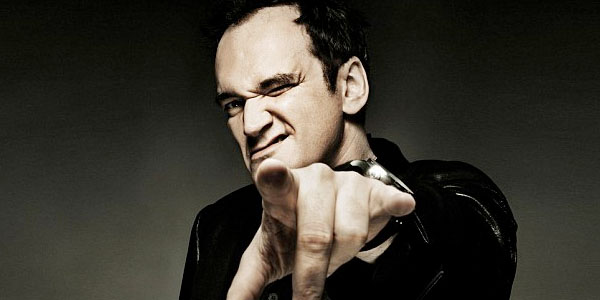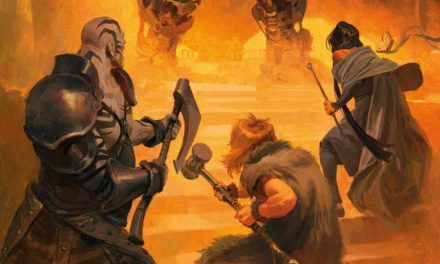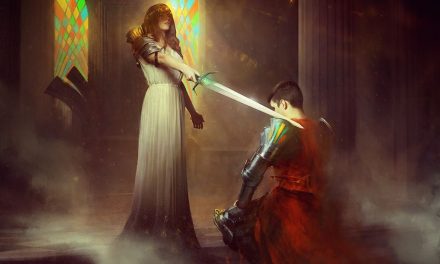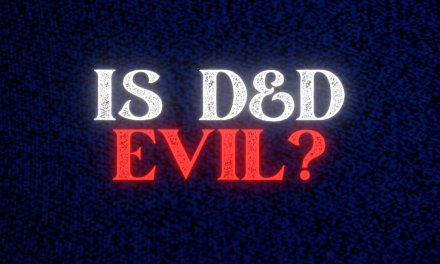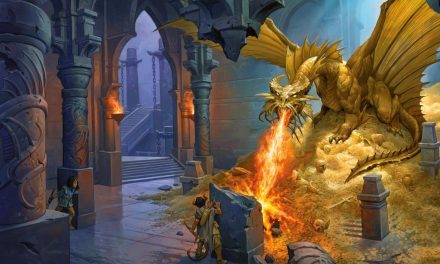I was talking with a friend earlier this week about one of my all-time favorite movies, Django Unchained.
The conversation ended up turning into how the movie would play as a D&D game.
That’s when the gears started spinning…
So I got to thinking about what a D&D game being run by Quentin Tarantino would look like. In fact, what would D&D games run by many of the greatest film directors of all time look like?
So I’m happy to present the first article of a new series that I’m going to try out: Directors & Dungeons & Dragons.
For our first entry in the series, we’re taking a look at how Quentin Tarantino might DM a D&D game.
Why Would Quentin Tarantino Make a Good DM?
Let’s start with some basic qualifications: why would Quentin Tarantino make a good Dungeon Master?
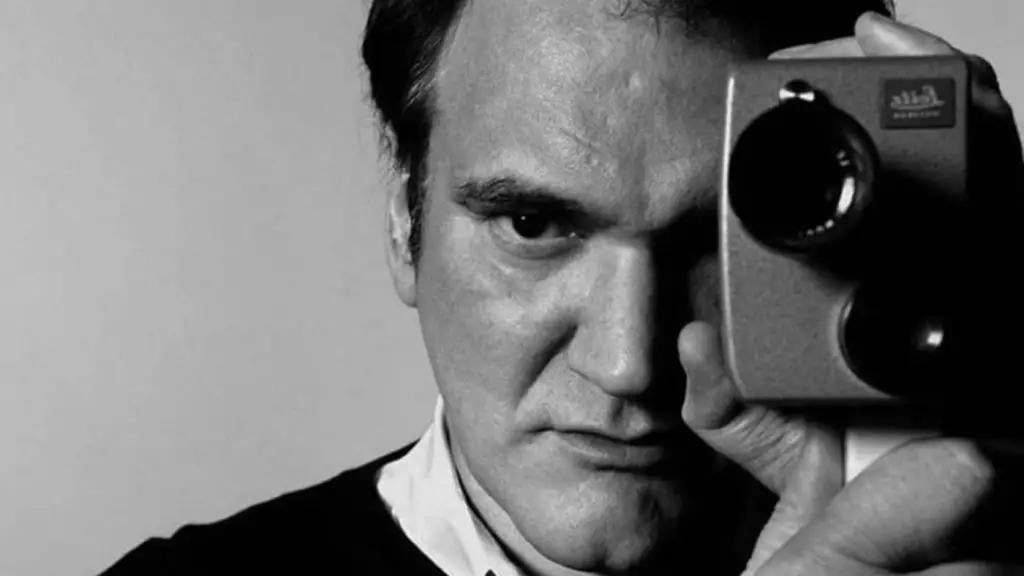
He Genuinely Loves His Craft
For starters, he’s the ultimate cinephile and has a clear, deep love for the art of storytelling in film.
That passion is his greatest strength in his craft. He makes great movies because he draws inspiration from so many great movies. He knows what will hit and what will miss. We’ll cover his use of technique later, but all of this stems from his sheer passion for what he does.
Applying that same passion to D&D would have a similar result.
Look at all of the best DMs out there on the internet. Their styles vary and you probably prefer some games to others, but they are truly passionate about their game and it shows!
Keeps himself in the audience
Tarantino makes movies that he would like to watch.
Empathy is a powerful thing when you are telling a story. Putting yourself in the position of the audience (or, in this case, the players) is how you know when to zig and when to zag.
Because Tarantino understands the people that are watching his films and what they expect, he is able to meet (and even subvert) those expectations in a way that is still engaging and fun.
This goes back to what we were talking about in the last point: great DMs know their players. Because they make it a point to understand the players’ play styles, preferences, and expectations, they can set up points for a story that will delight everyone at the table.
Take Critical Role’s Matt Mercer for example. He knows his players and that they want to tell deep stories with lots of roleplay and character development. Mercer then crafts campaigns that will play to these expectations to create a wholly unique game experience that is uniquely their own.
To get to know your players better, I recommend checking out this article on the types of Players that you will have in your group!
Start With a Bang
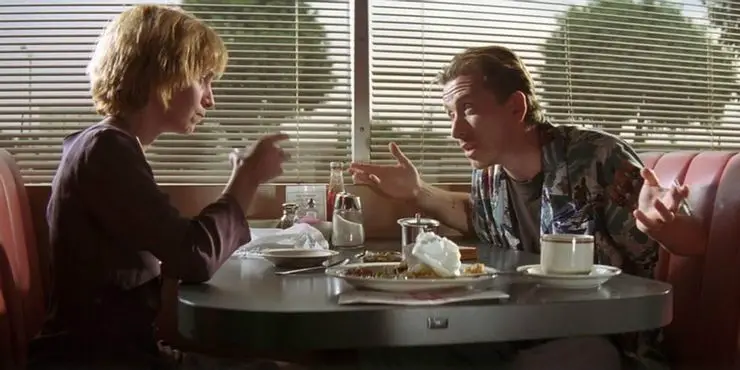
Tarantino knows how to get the audience fully invested in the story that’s to be told.
In a Tarantino film, you don’t spend half of the movie trying to line up the plot and explain everything that’s going on under the surface.
Instead, you jump straight into what is happening. This technique (also known as beginning in media res) makes a promise to the audience that they are in for a ride and that they should grip on tightly because “it’s happening.” (Whatever “it” is!)
There’s action, excitement, and a wonderful sense of chaos to these openings. It prompts questions and gets straight into the exciting meat of the story.
It may not always be full-blown craziness like in Reservoir Dogs or Pulp Fiction, but Tarantino’s openings are always unforgettable. I mean, I don’t know many people who wouldn’t consider the opening scene of Inglourious Basterds to be one of the greatest scenes in film history.
Dungeon Masters can learn from this. When you go to kick off a session, it should be memorable and make that same promise to your players that Tarantino makes to his audience.
If the entire first session is just spent introducing the world, players’ eyes will begin to glaze over. Give them that excitement, tension, and “meat” right from the get-go!
You want to get them leaning forward in their seats and asking questions about what is going on and what will come next. That’s how you get them hooked!
Which leads to the next point in Tarantino’s storytelling process…
Keep the Audience/Players Hooked
With a strong opening, your audience/players are going to be quickly invested in the story that is unfolding.
This is another point that Tarantino excels at: he keeps his audience hooked. The opening sees them gripping onto the story and every scene afterwards is meant to keep them holding on.
It can’t be a constant ramp in action without losing the effect, though. He gives the audience time to breathe and slightly loosen their grip on the story. But they know that it’s going to take off again so they never fully let go.
A Tarantino film isn’t something that you can really multitask with. You probably aren’t going to be watching the movie while you are playing on your phone. It commands your full attention. A second that you look away from the screen is a second that you miss important details.
Tarantino often does this by presenting films in a non-linear style which doesn’t work so well for tabletop games. But you can still learn from this technique.
Tarantino establishes trust with his audience from the very beginning of the film. He has made a promise that they are in for a thrilling ride and has left them with questions that will be answered eventually.
Because the audience trusts Tarantino to deliver, he is free to confuse them for the sake of keeping their attention.
As a DM, you have this same ability. Your opening doesn’t just start the game off on a high note, it establishes that trust in the campaign to come.
With Tarantino’s methodology, every task, side quest, or important NPC should serve to reinforce this trust while furthering the story.
The Open Loop
You can consider this type of storytelling as an “open loop.”
This open loop style of writing is precisely what makes your favorite shows so binge-worthy and what keeps you glued to your seat in a Tarantino film.
Trust me when I say that Tarantino has fundamentally mastered the concept of open loop writing.
At its core, an open loop works as a type of cliffhanger. An intriguing situation has been created and the audience/players naturally will want to see the conclusion. The audience buys in to the situation and are now emotionally invested in the result. Once that has been established, conflict is introduced.
This creates more questions while moving closer to answering the overarching questions that were creating in the introduction. The audience is engaged and wanting to know more about the situation that they have become emotionally invested in.
So while the opening creates the primary, overarching loop of the story, there are several smaller loops within the story that create other questions while also providing answers to existing questions.
Not only is this a powerful technique for keeping everyone engaged, it’s a great way to also track a story by milestones.
However, the golden rule of using open loops in storycrafting is that you should ultimately deliver the answers. With no reward of resolution, you lose that trust in your audience or players.
Dialogue Sets Up Extreme Situations
In film, creating dialogue that is both interesting and believable is one of the most challenging parts of the craft.
Few are able to achieve the same level of greatness in dialogue that Tarantino has. He understands the importance of marrying dialogue as character and plot development with dialogue as a setup for something huge.
Because of this, Tarantino’s dialogue lends itself to a very heavy dose of tension. As we covered already, these are the moments that the audience can catch their breath but they never fully let go of the story. They know that things are going to start rocketing forward again any second now.
It could come suddenly or it could build tension to levels that make players unable to hide their jitters.
But either way… we all know it’s coming…
Consider the famous dinner scene at Candyland in Django Unchained.
We all knew going in that this would end terribly. The pleasantries and etiquette served as restraints that forced the tension to build and build. We start to wonder who will lose their cool first and who will be left standing when the chaos inevitably erupts.
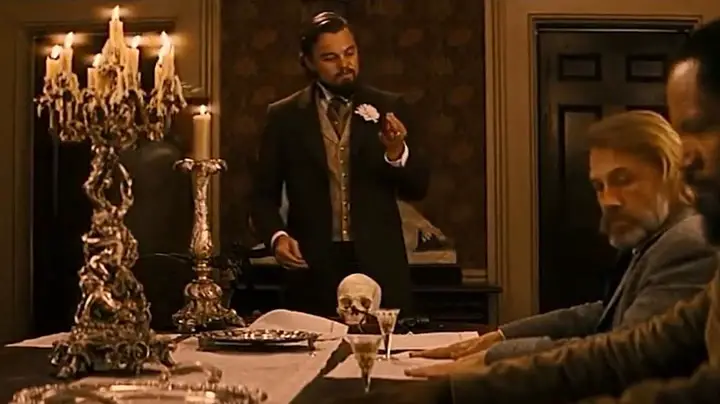
Know When to Stretch a Moment
In building tension and keeping the audiences’ attention, Tarantino also understands the power of details.
I can’t help but think of the adrenaline scene in Pulp Fiction.
Time slows down as the audience stares at the dripping needle of adrenaline. Vincent Vega holds the needle trying to psyche himself up to stick it in the chest of Mia Wallace who is currently dying on the floor.
The camera zooms in close on the needle then the mark on Mia’s chest that Vincent has to hit with the needle. We see her unconscious face and Vincent sweating profusely. If she dies, her husband will certainly have Vincent killed. It all comes down to this one moment.
Three seconds is expanded so that all of these details can be clearly shown to reinforce the moment. The stakes are incredibly high. Will this work?
At the end of the three-count, Vincent plunges the adrenaline into Mia’s chest. She immediately screams and lunges forward as the adrenaline pumps into her heart. With that scream, the audience jump and catch their breath from the tension created by stretching this moment.
As a DM, this technique is incredibly valuable but difficult to pull off.
Narrate these white-knuckle moments as if you are describing them to a blind person.
Mention the beads of sweat on the Wizard’s face as he unleashes a fireball on the evil villain. Describe the birds flying away in a panic from the explosion, the smell of charred earth, and the heavy clank of the villain’s metal boots as he continues to advance towards the party as the flames clear.
These details paint a vivid picture and build tension. The resolution that the villain is still alive from the fireball comes after the smaller details and takes on special significance as a result.
Clear Visualization
The tactic of stretching moments wonderfully leads into the next of Tarantino’s strengths that DMs can learn from.
There is a golden rule in storycraft regardless of which medium is being used. It’s best known as the rule of “Show, Don’t Tell.”
Tarantino shows us what’s happening by getting us as close to the action as possible. He shows us details and uses action so that we in the audience can experience the story. Rather than simply telling us what happens, he puts us in the middle of it.
This rule is largely one of the greatest strengths of TTRPGs like D&D in general. Because so much of the game takes place in the collective imaginations of the players, it’s important to provide vivid descriptions.
As a game, players don’t want to be told a story; they want to be the story.
Creating clear visualization through the rule of “show, don’t tell” is how Tarantino creates such iconic scenes in his films. This same attention to the importance of everything that makes up the scene can easily be applied to D&D with the same effect.
To Tarantino, it all matters. Where the characters are standing, how they are framed, and all of the details that make up the scene all matter.
If Quentin Tarantino was DMing a D&D game, you could bet that he would call attention to all of this in clear and vivid detail.
Use of Contrast and Exaggeration
Visuals are powerful.
This is particularly true when, as a DM, you are able to describe a scene in such a way that it is clearly envisioned by your players.
Contrast and Exaggeration both largely define Tarantino’s approach to building a visual scene.
In Kill Bill, the character O-Ren is horribly disrespected because of her heritage. She quickly and calmly moves across the table to the offender and decapitates the man with her sword.
The moment is stretched (as we already talked about) out to reveal a massive fountain of blood spewing up as the man’s head finally falls from the air onto the table. It’s over-the-top, but so cinematic and incredible to watch.
Similarly, Tarantino uses visual contrast as metaphors in his films.
Returning to the unbelievably intense opening scene of Inglourious Basterds, see how Tarantino uses the size of the men’s pipes as a visual contrast.
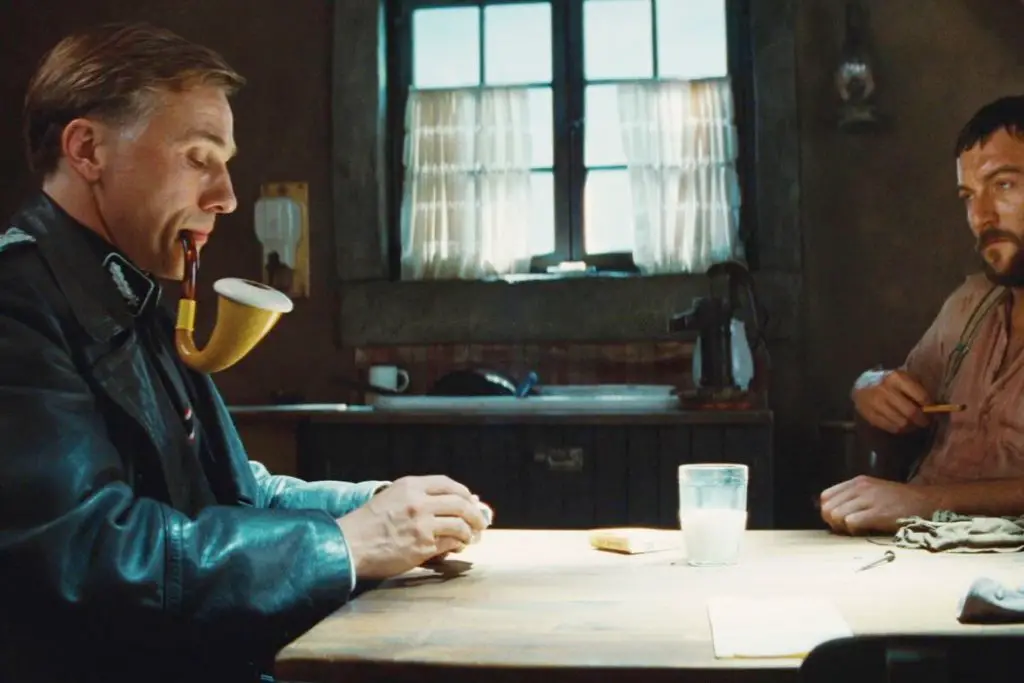
In this scene, the tension builds behind pleasantries and hospitality. Colonel Hans Landa is investigating the farm of Perrier LaPadite who he believes to be hiding the Dreyfus family.
Landa, LaPadite, and the audience all know that the Dreyfus family are under the floorboards, but nothing has happened yet. The tension grows with “pleasant” conversation and the men begin to smoke their pipes as they converse.
LaPadite smokes from a simple corncob pipe as Colonel Landa lights a massive pipe of his own. (Apparently these are called Calabash Meerschaum pipes?)
The message is clear: Landa is demonstrating to LaPadite that they are not equal. It is an anything-but-subtle flex on Landa’s part that demonstrates the imbalance of power between the two men.
Tarantino’s technique here translates perfectly to D&D.
Create visual contrast in key scenes with vivid description and enhance the moment by exaggerating elements of that description.
Color
If Quentin Tarantino were to DM, I could see him paying special attention to the colors present in a scene.
Tarantino clearly favors strong and vibrant colors that are meant to show characters emotions just as much as they are to draw the audience’s focus. These particularly tend to show up when a character is on a mission.
Consider the blues worn by the titular characters in Django Unchained and Jackie Brown. What about the Bride’s bright yellows in Kill Bill or the dark reds worn by Shosanna in Inglourious Basterds when she is finally getting her revenge?
These colors are worn by the characters while also being echoed in the background of these important shots. They give subconscious clues as to what’s happening just under the surface of what the audience sees.
This is powerful imagery that can particularly be used to instill that emotion in players at the D&D table.
Example: Using Color to Set the Scene
As the party attends the banquet at Castle Ravenloft, the vampire Strahd Von Zarovich greets them. His dark black cape and hair standing in clear contrast to his pale white face. Behind him on the wall is a portrait of himself standing proudly in a dark, crimson armor. He raises his glass of what appears to be a dark red wine.
Velvet curtains of a deep burgundy line the room. At the center of the room is a large cherry banquet table set with a bright display of exquisite fruits and juicy meats. 12 bright red candles, thoughtfully place, illuminate the table. Above, three elegant silver chandeliers holding several more lit candles.
In this example, the colors incline us towards Strahd’s mysterious but seductive nature. He wishes to clearly see his guests, but he himself hides behind dark and ominous colors. Rather than putting himself in full view, he entices the party with fine things.
Before even a word has been said, taking the time to paint the scene with an emphasis on color has established a character dynamic. If there were ever any doubts of his intentions, the players will subconsciously pick up on the fact that Strahd is sizing them up while keeping his intentions under his hat.
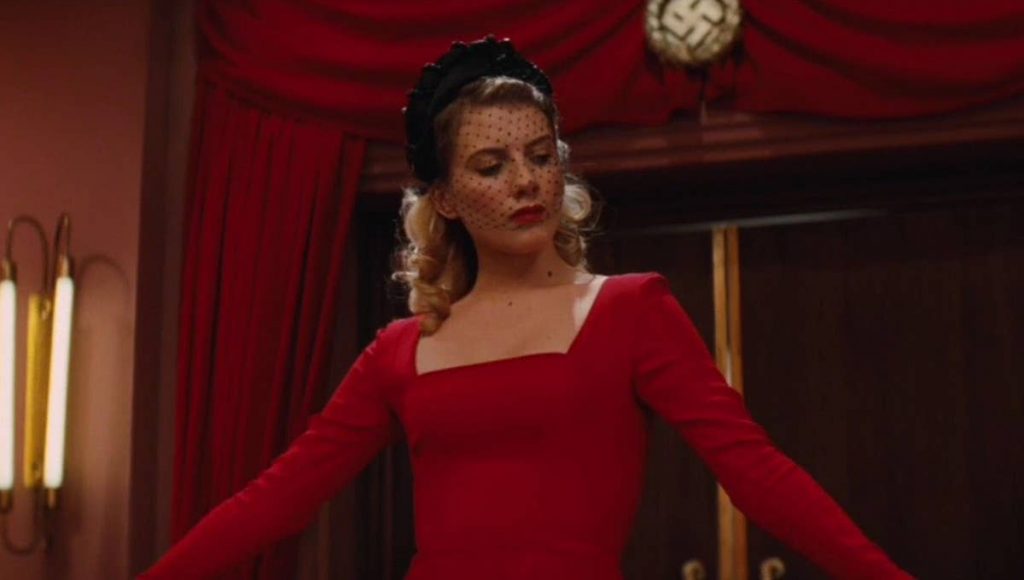
The Rule of Cool
Not everything in a Tarantino film necessarily makes sense. To be honest, it doesn’t have to. Just like in D&D, the fact that something is just cool is often reason enough for it to be there.
If Tarantino was running a D&D game, there would be absolutely no shortage of moments that are just… well… cool!
In Django Unchained, why does the encounter at Candyland turn into a full-blown massacre?
Because it’s cool.
In Reservoir Dogs, why does Mr. Orange tell us about his alias’ recited criminal story?
It’s cool.
Letting cool things happen just because they’re cool is a huge draw to both Tarantino’s work and any D&D game.
Whether we’re talking about watching movies or rolling some dice at the D&D table, people want some escapism. Letting cool things happen is exciting, memorable, and honestly the players are usually so over-the-moon that the DM can almost put the game on autopilot and catch their breath for a minute or two!
Take a hint from Tarantino, something being cool is more important than following the rules.
Extreme Characters
Tarantino’s characters are anything but dull. I think it’s almost impossible for him to make characters that just blend in with the background.
Of course, this is especially true of his films’ protagonists.
In a D&D game, the players are the main characters.
While players already tend to make dynamic and extreme characters (because… why wouldn’t you?!), I fully see Tarantino being their biggest fan.
He would make sure to set up scenes and situations where every character can shine and develop. Even (especially) players who tend to be more reserved at the table would have moments to shine that are meant to help bring them out of their shell and fully into the game.
NPCs would walk a line where they are dynamic but not so much so that they overshadow the main characters of the story.
In a Tarantino D&D session, he would likely be pulling out all the stops to make every single character feel like an absolute force of nature.
If there is only one technique that DMs can learn from Tarantino, it’s how to set up situations for characters to be amazing. The way that he draws awesomeness out of characters in ways that still feel true to who that character is is something that every DM should take notes on!
Dialogue
Because of this, I imagine that Tarantino would be able to make nearly any NPC that the party encounters into something interesting.
That friendly old woman who sells supplies from her general store? The fishing boat captain who gazes longingly out towards the sea? The sassy but sweet bartender at the inn?
None of these are just characters in the background. They live and breathe within the story with their own motivations and experiences. Conversations with them could be as deep as the party wants and may even lead to new quests or loops to be explored.
We’ve already talked about how this dialogue can be used to create tension and line up something huge. Keep your players as the central point of the story, but make sure that the NPCs are also interesting and engaging!
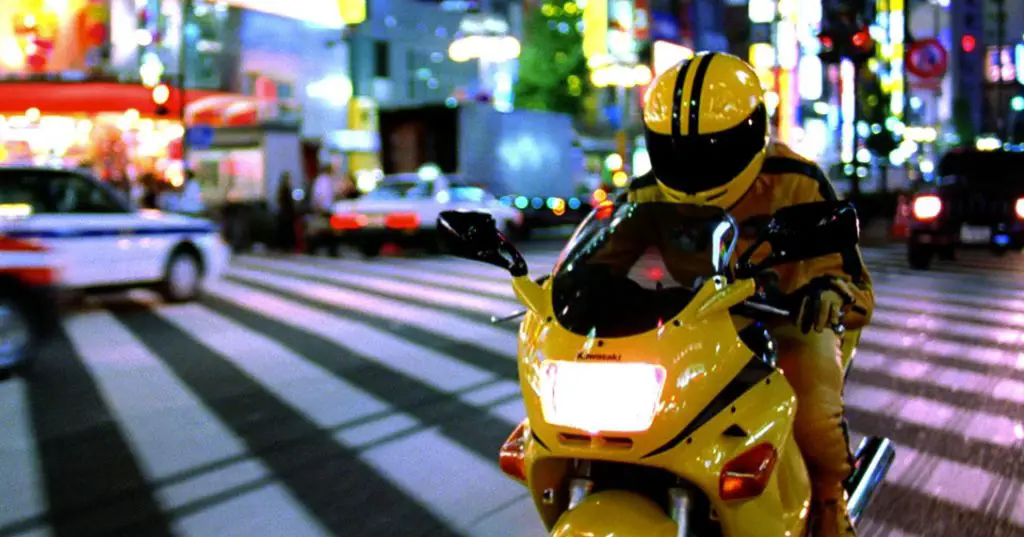
What D&D Module Would Quentin Tarantino Run?
Honestly, I couldn’t see Tarantino running a module. But, I don’t think that any of the directors that I plan on covering in this series would run a module that they didn’t write themselves.
But that’s not exactly fun to imagine…
So, assuming that he had to run a module, two come to mind.
Waterdeep Dragon Heist is hands-down the first pick.
This module is focused less on combat and more on roleplaying and problem-solving. Tarantino’s almost supernatural ability to dial characters’ personalities up to 11 while keeping them believable would breathe an incredible life into every part of Waterdeep.
Not to mention, with movies like Reservoir Dogs and Pulp Fiction under his belt, the man knows how to portray crime in his stories. Just imagining how he would portray the Xanathar Guild or Jarlaxle has me feeling excited and jittery.
It would also be really interesting to see how Tarantino would run Icewind Dale: Rime of the Frostmaiden.
Maybe it’s the frozen vibes reminiscent of The Hateful Eight, but Tarantino could absolutely work some magic with this module.
Not only is the adventure itself just absolutely fantastic (seriously, why is the D&D community so quiet about this one?), but there’s a ton of space that Tarantino could use to really develop the characters of Icewind Dale in the bleak cold setting.
Plus, I would love to see Tarantino really tackle the horror genre.
While the gothic horror of Curse of Strahd would be an interesting subject to receive the QT treatment, I feel that sticking to the rules of gothic horror is largely what defines the genre. In a module like Rime of the Frostmaiden, he could really make it his own.
Conclusion
So that about wraps it up, I think.
As such a visual director who loves breaking rules and creating extreme moments, I think that any DM can learn a lot from Quentin Tarantino.
I’m hoping that this series helps DMs of all experience levels draw inspiration from other visual storytellers. Being able to pull from the masters of cinema and incorporate their techniques into your game can be incredibly powerful!
What do you think of this series idea? Who should our next director for DnDnD be?
I’d love to read your comments on it so that I can refine the series format going forward.

